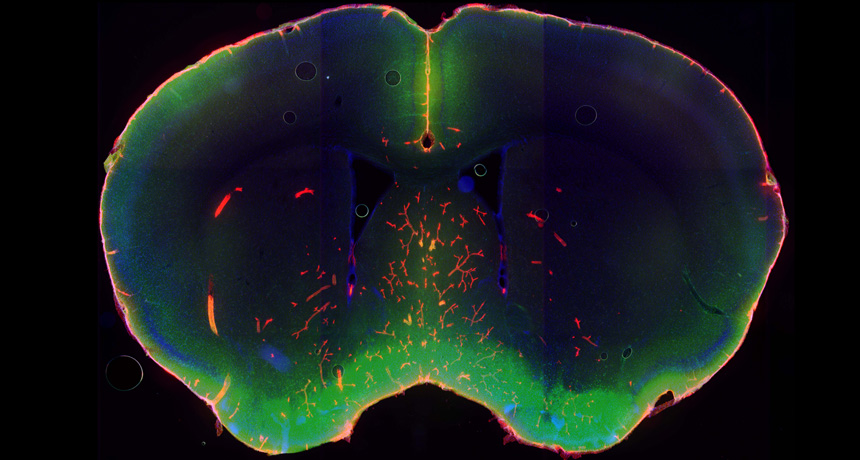Discoveries of the Outgoing Year - Another Useful Sleep Function

The brain of an experimental mouse in the process of sleep. The red "stripes" in the picture are streams of cerebrospinal fluid in the process of cleaning out waste.
Sleep clears the brain of the extra information that has accumulated during wakefulness - a statement familiar, probably, to everyone from school. In 2013, a slightly more substantial explanation of the role of sleep in human life appeared.
People have long puzzled over the evolutionary processes that led animals to the need to sleep - after all, this makes them easy prey for predators and exposes other dangers. "Flushing" of the brain from protein debris and other tangible elements that have accumulated quite a tangible element could well explain this phenomenon.
Researchers at Rochester Medical Center in New York discovered the cleansing function of sleep while studying how the brain gets rid of waste.
The brain flushes the space between its cells in order to get rid of debris, such as protein particles, that form plaques in people with Alzheimer's disease. After it was possible to achieve immobility from the experimental mice on the microscope stage, the researchers were able to measure the fluid flow during wakefulness and during sleep. The space between the cells increases by at least 60 percent when animals fall asleep, allowing the cerebrospinal fluid to clear the brain of deposits. When animals wake up, some brain cells - probably those called astrocytes - swell, narrowing the space that separates the cells.
')
In the event that the waste disposal system is clogged, debris from industrious nerve cells begin to accumulate. Scientists suggest that sleep deprivation or damage to the irrigation system can make it impossible to fully clean the brain and, ultimately, contribute to neurodegenerative disorders such as Alzheimer 's and Parkinson's .
Source: https://habr.com/ru/post/208030/
All Articles